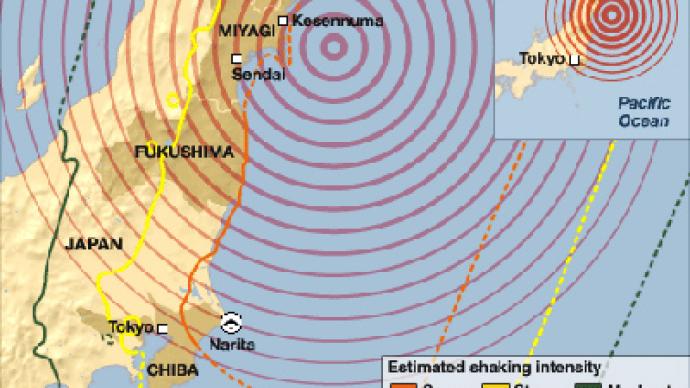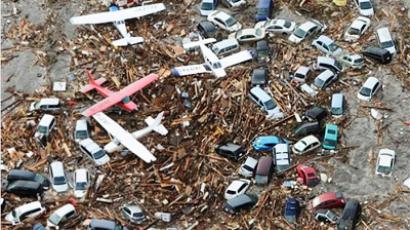Natural disasters no more common, it’s just mass media – scientist

Natural disasters seem to be getting more ferocious, while scientists find it almost impossible to predict deadly tsunamis, floods or wildfires. But Klaus Peter Koltermann, a prominent oceanographer at UNESCO, tells RT how the risks can be reduced.
UNESCO oceanographer Klaus Koltermann is working closely with Moscow State University on a $5-million project to establish a tsunami center in Moscow. At the university’s laboratory for the assessment of natural risks, Koltermann and his team use existing high-level scientific models and expertise to look at what happens naturally at sea: strong surges, sea waves, inundation, etc. But what is new in their activities is that, besides observation, the scientists try to answer the question which has re-entered the global community’s agenda with an increased urgency: Koltermann and his team work at estimating how large the risk from natural disaster is and how it might affect people, infrastructure and industry. If you look at Russia’s coastline, which encompasses the full gamut of sea conditions, from the snowy and icy coast of St. Petersburg in wintertime to the southern seas of Azov or Caspian, you will see that different extreme events are possible. “They will all affect the coastline, where people live, where ports are, where railroads are, where tourism is developing. And here the direct assessment includes how this will happen, how large it will be and how much the damage will be. So we can advise for the governments’ and authorities’ planning how much the protection and preparation should be,” explains Koltermann. With all risk management works underway, prediction of natural disasters such as tsunamis is not yet possible, regrets Koltermann.“The big Japan tsunami on March 11 was a disaster everybody had thought about for 30 years. It was just slightly in a different region,” points out the oceanographer. “The preparation was not enough. It is a wonderful example of how the assessment should be thorough and the possibility of area should be taken into account.” But commenting on the apparent increase in the frequency of natural disasters, Klaus Koltermann says that this is the mass media to cause the havoc.“These increasing catastrophes have to do with global news coverage. If anything happens – it will be all on television screens. If you watch, for example, earthquakes for a long time you will see these highly seismic zones which are well known. Earthquakes will happen everywhere and constantly. People in the region, for example fishermen, know this. But new coastal inhabitants are not aware of the dangers and get shocked,” says the scientist.Koltermann’s center in Moscow will now focus on wildfires, as the previous summer in central Russia was marked by massive peat bog fires. The heavy smoke made breathing difficult and affected visibility for several weeks, even in the capital. Koltermann believes this happened due to the lack of rain during the preceding winter and an increased volume of water used by people during the extremely hot summer. The scientist thinks that preparation works to minimize the risk and damage from that disaster should actually have begun five years prior to the event. “The philosophy we try to bring in is that it is not only important to react, but to act before things happen. This is something new we [are trying to introduce] in Russia. The people, the fire brigades are excellent and they are available, but it is better not to call the fire brigades, because there is no fire,” concludes Koltermann.













